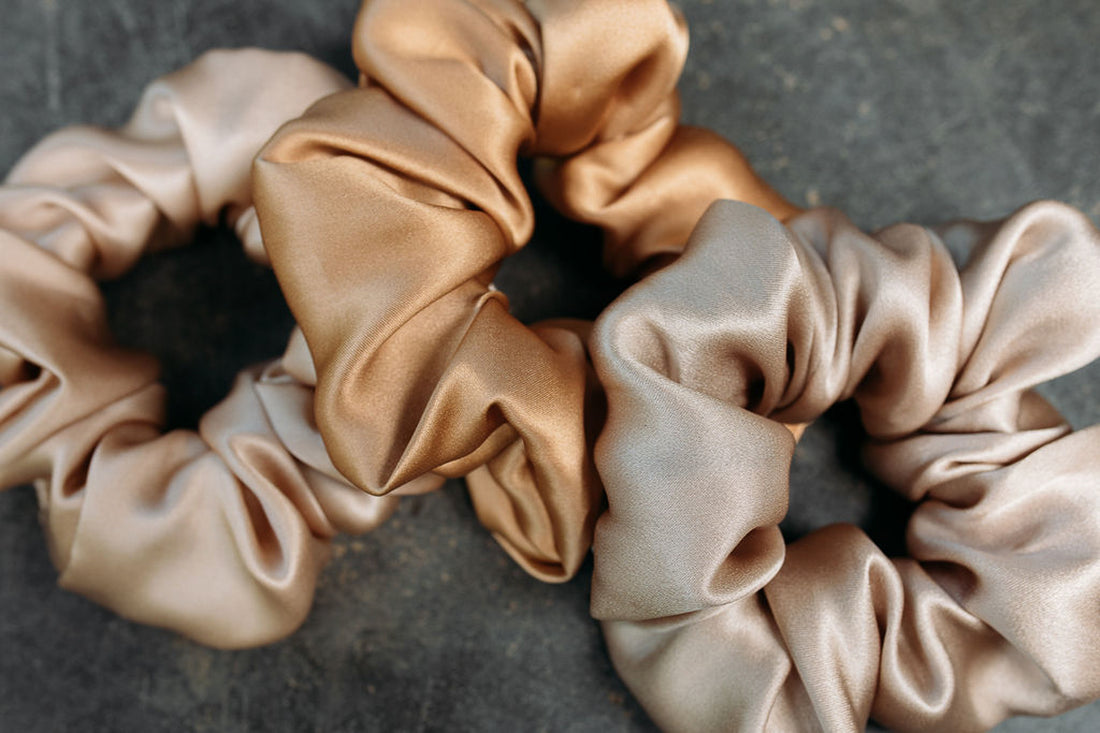
How to spot real silk and what is momme?
Share
The characteristics and benefits of natural silk
Smoothness. Due to the ultra-smooth texture as well as natural proteins and amino-acids silk contains, it is beneficial for hair and skin. Hair glides over it without friction, meaning less frizz and tangles. The smoothness of silk means - when sleeping on a silk pillowcase it absorbs less moisture from the skin, keeping it soft and without stripping precious moisture.
Strength is one of the most interesting characteristics of silk. At first touch, you might be fooled into thinking silk is fragile, but it’s actually one of the strongest fabrics there is. It is most elegant and gentle on your skin, but underneath the shine it’s brimming with power. Part of this strength comes from the length of the fibres. Cotton and linen are made from short plant fibres that are spun together to make longer threads. Silk is cultivated from the cocoon of silkworm larvae – they can make a long, continuous thread to work with. The process is time-consuming and delicate, which explains the high cost of this fabric. You can’t pull a strand of silk into its component fibres in the way you can with cotton.
Shine. Silk fibres are smooth and straight, unlike wool, for example, which has a scaliness you’ll see if you put it under a microscope. This difference makes silk smoother to the touch and shinier to the eye, with an altogether luxurious feel.
Breathability and thermal regulation. Silk is a lightweight, breathable fabric, which means it reduces the risk of overheating when you’re going about your day. Silk is good at maintaining your body temperature which means it can help you feel cool in hot weather and warm in the cold. If you want a fabric that’s both thin and a good insulator - silk is the way to go.
Durability and sustainability. If treated well, silk will last you for a long time. Read our care instructions to make sure you know how to take care of your silk items. Our 25 momme Mulberry silk is is a completely natural, biodegradable fibre.
Drying speed. Silk is fast drying which makes it highly practical.
Which type of silk should I choose?
Silk products have become very popular lately, but with so many types of silk fabrics advertised it is hard to know what you are paying for. Here are some of the things you should consider:
Mulberry silk is the most luxurious natural silk available on the global textile market and it is also the most expensive type of silk to buy. What is it about Mulberry silk that makes it so special?
Mulberry silk is made from silkworms who eat from the leaves of the mulberry tree. It's the most durable silk and also the softest, which makes it ideal for highest quality beauty care items.
Why are mulberry silk items more expensive than ones made from different types of silk?
Mulberry silk is very expensive because of its costly production and very consistent quality. It takes more than 5,000 silkworms to produce just one kilogram of mulberry silk.
What is momme?
Momme describes the silk's weight and density. Silk is measured by weight either by grams or by momme (mm).
Higher momme means there is more strands of silk per 100 yards of fabric, therefore making the product heavier. The higher the momme, the higher quality and more durable the fabric is. The most popular silk fabric for beauty products is considered to be from 22-25 mommes, 19 will be a little bit too light and 30 mommes will be heavier and denser fabric. We have tested and chosen to use 25 momme natural Mulberry silk for the production of our products.
The silk we use is made in Italy, Como area, where silk production dates back to fifteenth century, when it was introduced to Europe from far east. The silk fabric is coloured with non toxic dyes according to EU standards.
Natural silk versus satin.
Besides all of the above, some other factors reflect the quality of silk such as its authenticity. We suggest to beware of brands which advertise beauty products stating ’silk-like’ or 'silk satin’.
This often means that it is not made from real silk or it is mixed silk blended with cotton or synthetic fibres like polyester. Satin is a popular weave, but when it comes to silk, it often is used to mask the fact that it is not a pure silk product. These products are cheap.
Quite often satin is just a fabric that is made of filament fibres such as polyester or nylon - synthetic materials. These fabrics will not give you the benefits of natural silk.
The colour of natural silk will always be soft and muted, because of its natural characteristics, it will not have as bright colours as synthetic materials.
If you are serious about investing in your beauty and self-care, we advise to look for 100% natural silk products.
If you want to enjoy the full benefits of natural silk, we suggest to look for product description mentioning "100% natural Mulberry silk" "100% natural silk" or "100% pure silk"
